NBA/NFL Celeb. Bonnie-Jill Laflin: ‘Big Black Mark’: ‘NPS Should be Really Ashamed’ of its Mgmt. of Tule Elk at Point Reyes
(EnviroNews California) — Round Valley Regional Preserve, Contra Costa County, California — Almost 200 years ago, herds of tule elk (Cervus canadensis nannodes) roamed freely along the California coast. However, as American expansion pushed westward, their numbers plummeted drastically as they were hunted for their meat and hides. The current tule elk population — a species that is endemic to California — is at about one percent of his historic numbers. Intervening conservation efforts saved the species from extinction, helping them to become a tourist attraction today. Nevertheless, critics and environmental organizations say the tule elk face a threat from the very entities tasked with their protection: the National Park Service (NPS) and California Department of Fish and Wildlife (CDFW). The perceived unjust treatment of the tule elk at the Point Reyes National Seashore (PRNS/the Seashore/the park) – the species’ greatest remaining stronghold — has drawn the attention of wildlife activists, including Bonnie-Jill Laflin. As such, she sat down with EnviroNews in Northern California, where tule elk were once in abundance, to explain her connection to the animal and to discuss how she is advocating for the fragile species.
Laflin was a cheerleader in the NFL and a dancer in the NBA. She’s also an actress, model, sportscaster, host, and reporter. She holds six championship rings, spanning the two men’s sports. With the Los Angeles Lakers, she became the NBA’s first female talent scout; she’s currently a front-office executive with the team, holding the title of assistant general manager with the club’s G League team. But throughout her illustrious sports career, she has also been a passionate animal rights advocate, working for a variety of animal welfare and environmental causes.
Laflin grew up in the Concord-Clayton area; her family’s property backed up against a tule elk reserve that was located near Port Chicago at the Concord Naval Weapons Station. Separated only by a thin fence, as a small child, Laflin thought the elk were like her other pets, describing how she would put her hand through the fence and feed them fruits and vegetables.
POINT REYES NATIONAL SEASHORE: A HISTORY FRAUGHT WITH CONTROVERSY
Tule elk are native to Point Reyes. However, hunting and westward expansion decimated their numbers, reducing the species to fewer than a dozen specimens by the 1870s. But in 1978, joint conservation efforts reintroduced them to the Seashore, which sits in Northern California’s Marin County. As part of that reintroduction effort, the Tomales Point herd was formed. It has been one of the largest remaining concentration of the animals ever since. But that is changing fast.
The crux of the issue that has infuriated animal rights activists — loosely known as the “elktivists” — over the Tomales Point herd, centers around the availability of the most basic resources: food and water. The animals are confined behind an eight-foot-tall elk fence to keep them away from 24 cattle ranches that operate inside the park. The continuation of these cattle businesses in the Seashore is the very heart of the controversy at PRNS.
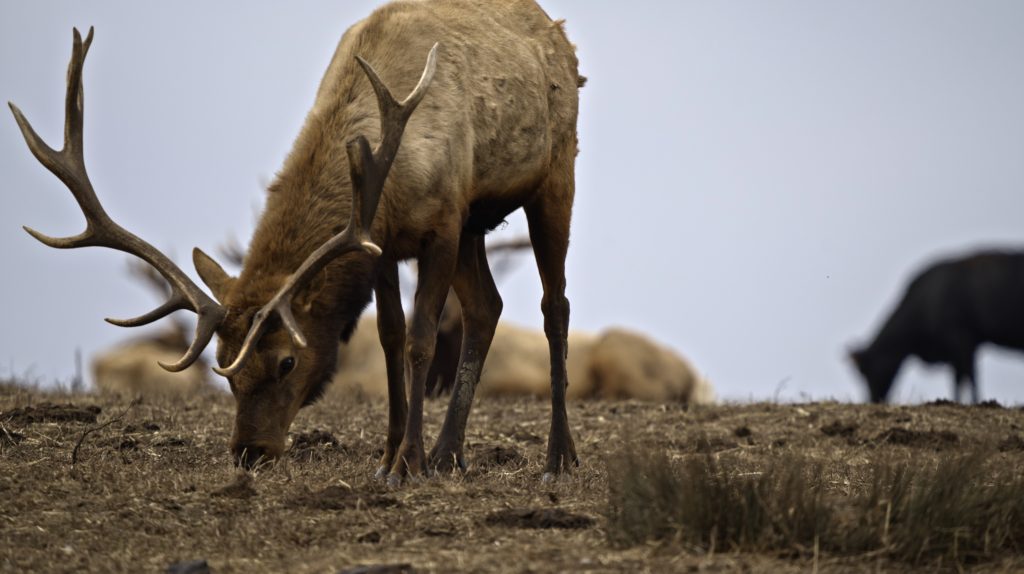
There are very few industrial operations inside any national park unit, but at Point Reyes, about one-third of the park is consumed by dairies and other cattle operations, leading to hundreds of miles of accompanying fencing, which environmentalists say impedes wildlife – including the tule elk. Numerous pictures taken by wildlife photographers at PRNS show elk that have died after getting caught up in cattle fencing.
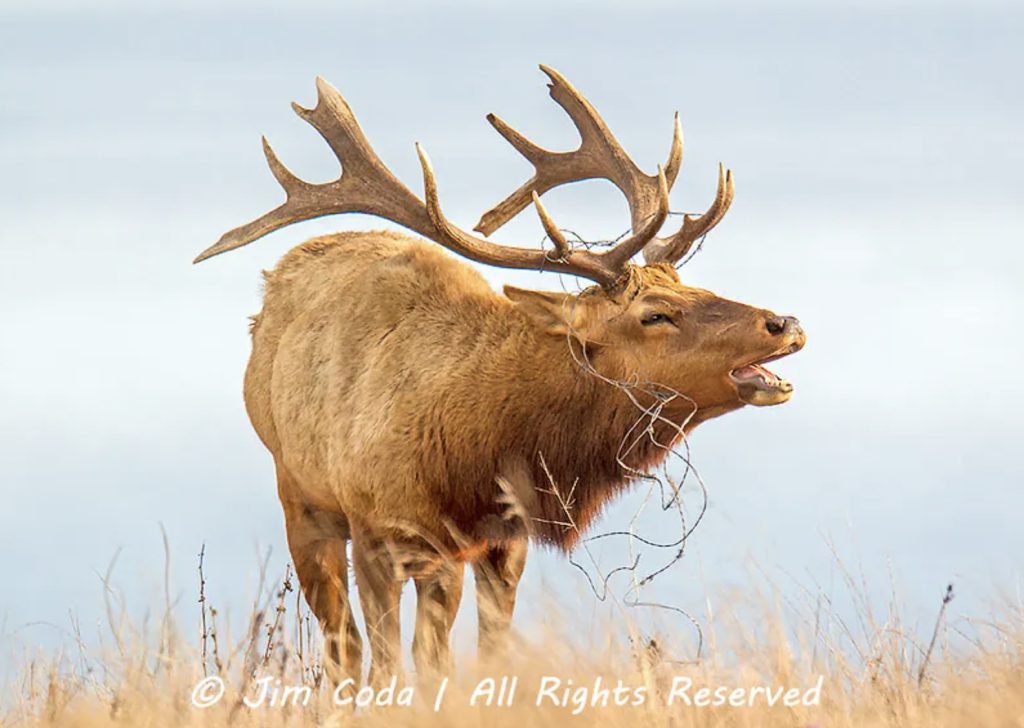
For years, the ranchers pressed the NPS to push the Tomales Point elk into a more confined area — the 2,600-acre Tomales Point Elk Reserve — so that they would not deplete resources from their livestock herds. In 2017, three prominent conservation non-profits sued NPS for damages they said agricultural activities were having on the Seashore’s ecosystem. As part of a court settlement, NPS agreed to conduct an environmental impact statement (EIS), and to amend the 1998 Tule Elk General Management Plan. Mandated by the National Environmental Policy Act (NEPA), a public comment period is required as part of the process.
Around 95 percent of 7,627 respondents from the NPS public comments favored removing ranching activities from the park, yet NPS chose to extend the ranching leases for another 20 years in a plan crafted under President Donald Trump and then-Interior Secretary David Bernhardt. An additional 99 percent out of 45,000 public comments garnered from a separate survey opened by the California Coastal Commission (CCC) expressed the public’s desire to see the end of cattle businesses inside the Seashore.
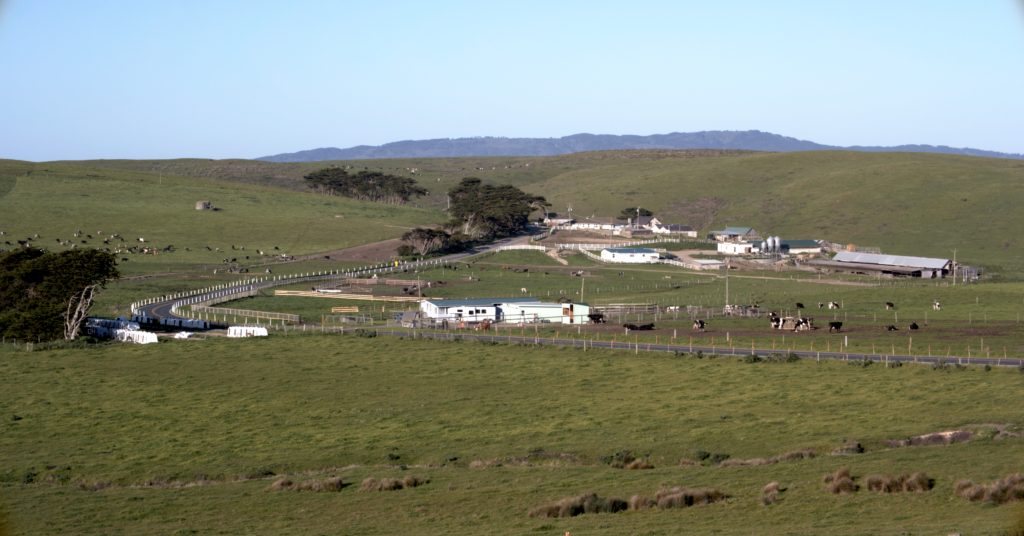
Following its Record of Decision (RoD) in September 2021, NPS was sued again by the same trio of environmental orgs that sued to force the EIS in the first place. In the lawsuit, the Center for Biological Diversity, the Western Watershed Project (WWP) and the Resource Renewal Institute (RRI) allege NPS conducted a faulty environmental review when the agency chose Alternative B – the plan that extended the ranching leases. Alternative F on the other hand – also crafted in accordance with the court settlement – would have removed all ranching activities from the park had NPS chosen that route. Alternative F was heavily favored by members of the public who weighed in during the public comment periods.
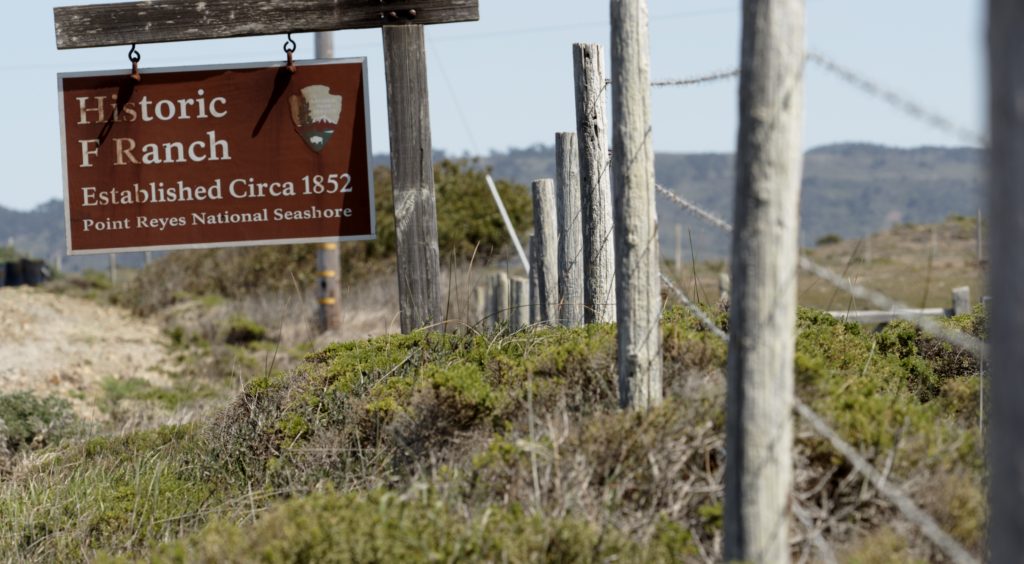
The Tomales Point tule elk are now to remain captive behind the eight-foot, woven-wire fence. The problem is that this limits the availability of food and water that is accessible to the herd – and critics say this dynamic has resulted in the death of a significant portion of this herd.
BONNIE-JILL LAFLIN SPRINGS INTO ACTION
When Laflin heard the elk “were deprived of water and food at Point Reyes [historic park] and that they were putting fencing around, so they weren’t able to get to their food” Laflin told EnviroNews she felt compelled to spring into action. Thereafter, she engaged herself in the issue directly, appearing as the keynote speaker at a tule elk protest in downtown San Francisco staged by animal advocacy organizations In Defense of Animals (IDA), Western Watersheds Project, TreeSpirit Project and Turtle Island Restoration Network.
Laflin Demands Action at a Tule Elk Protest in San Francisco
California experienced some of the most serious drought conditions in state history between the years of 2012 and 2015. During this time, 254 individual elk (47% of the population at that time) died in the confined area – an area the animal rights groups refer to as the “elk zoo.” During 2021, 152 more elk died. Meanwhile, tule elk numbers in the wild and free-roaming herds at Drakes Beach and Limantour Beach actually increased over the same time period. The herd suffered devastating losses in 2020 as well. NPS released a report indicating that more than one-third of the 445 elk fenced in at Tomales Point died during 2020, reducing the herd’s population to just 293.
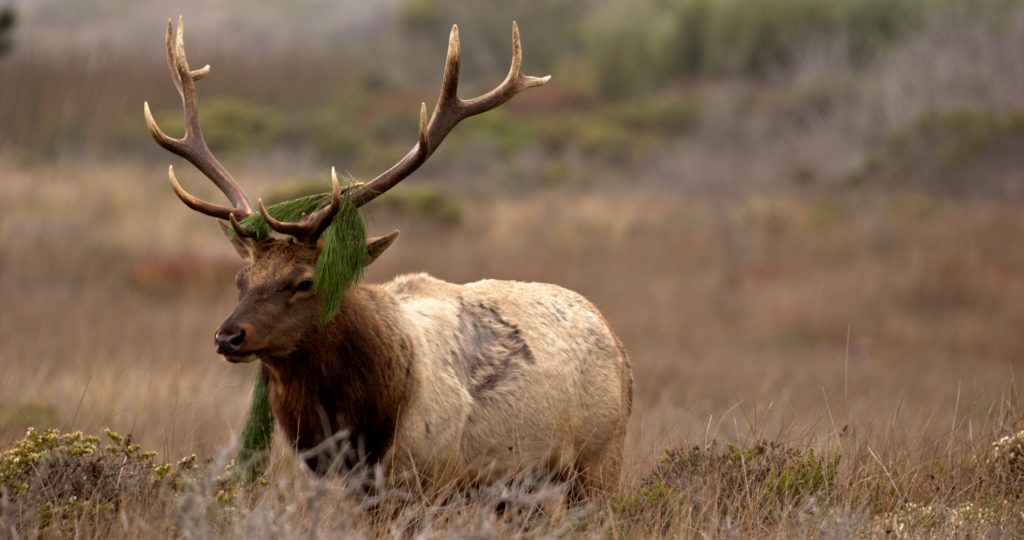
The alarming number of elk deaths drew the attention of local activists. Led by Jack Gescheidt of TreeSpirit Project, they attempted to bring water to the Tomales Point herd, but were instead written tickets by the NPS, whereafter park rangers actually dumped out the water troughs they put out for the elk. Months later, NPS ultimately ended up taking water to the herd itself, but it did not have the life-saving effects that NPS likely intended. The elktivists say this is because the agency’s efforts were done far too late to make a noticeable difference.
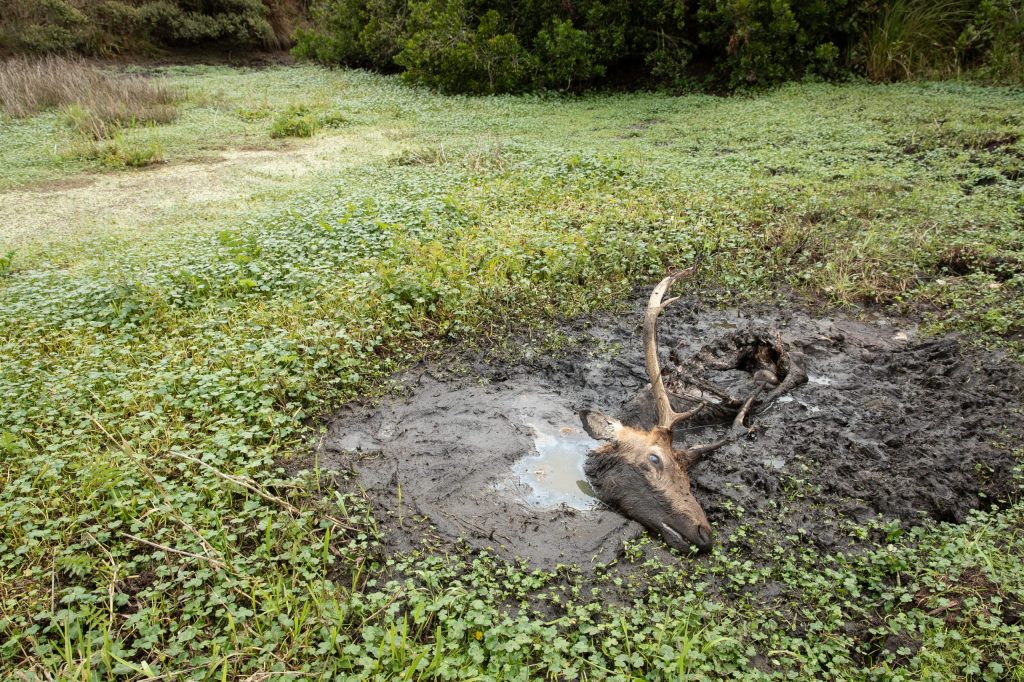
“To see the images of these [elk]; you can see that some of these tule elk — the way they’ve died — you could tell they were tortured,” described Laflin.
Laflin began mobilizing fellow activists and celebrities, appealing to congressmen and congresswomen, lending her voice to the cause and calling the NPS to task for the way it was managing the tule elk – a species adored by many Northern California tourists.
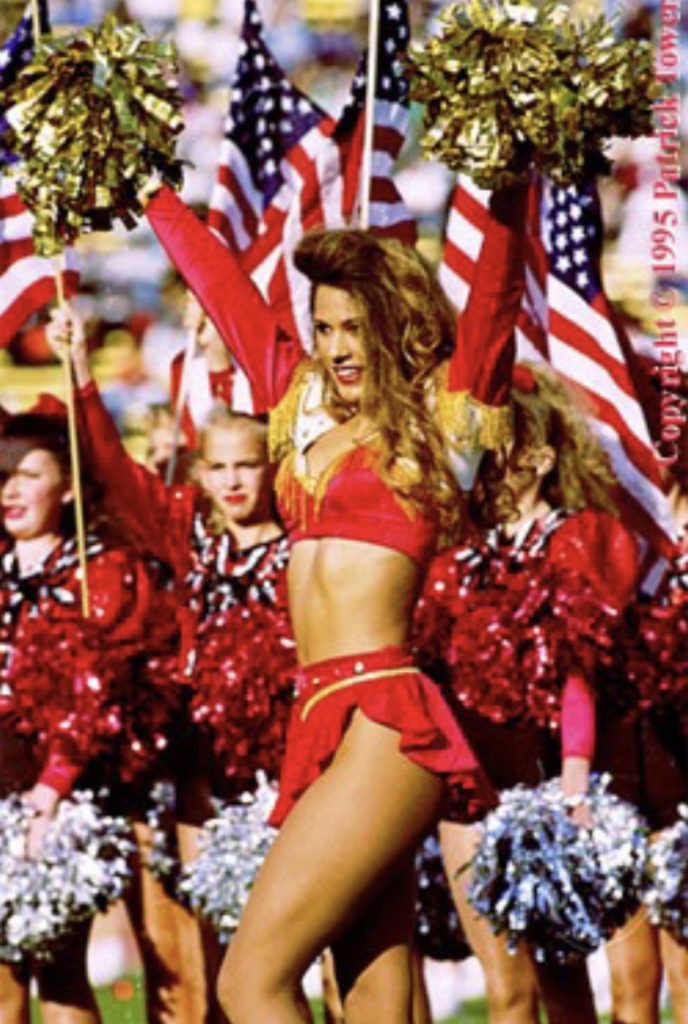
“My thing is when you go to these parks — I don’t care what park you go to across the country, that is the place where you would think animals would be safe,” said Laflin. “That’s where wildlife is supposed to be protected and safe. So, that is what outrages me, because if they can’t be safe there, where can animals be safe?”
She emphasized that the National Park Service’s role should be to protect the tule elk and other imperiled wildlife under its management; she and many others now criticize the agency for being aligned with counter-interests — in this case, the ranching families.
“It’s embarrassing,” Laflin bluntly stated. “[NPS personnel] should be really ashamed of themselves because I really think it’s put a big black mark on what they do because they have done some great work.”
For Laflin, the solution involves proactive efforts that are twofold: changing policy and raising awareness. “We’ve got the solutions of what we can do and I don’t understand why they can’t take these cattle somewhere else and be able to either co-exist or get rid of them. It’s really not that hard,” she said.
Laflin also noted that the tule elk are also symbolic of California’s rich coastal culture, comparing the species to Yellowstone’s iconic bison herds. “There are a lot of people when they come to the Bay or go to Marin, they want to see the tule elk,” Laflin said before laying down her frustrations when she exclaimed, “I don’t understand how this all even got to this point.” She went on to explain further:
I’m always trying to get more prominent, big names involved in this, but not just locally, because I think nationally if someone lives somewhere [out of the area that’s okay]. I’ve got a lot of friends, athletes and different celebrities that live across the country, but they don’t like what’s going on and they may not have some roots to that area, but what’s right is right and what’s wrong is wrong, and they want to lend their voice to that, to let people know: this isn’t okay. You can still be outraged. You can still do your part to try to get people aware of what’s going on.
Laflin’s awareness efforts extend beyond simply spreading the word. She also emphasized that she tries to educate people on important topics such as the tule elk.
“I try not to go over the top and, and turn people off,” she said. “I try to educate. I do that with everything when it comes to not wearing fur, being cruelty-free, everything,” she stated laughingly while grabbing her jacket collar and clarifying, “This is faux fur by the way!”
This philosophy is in alignment with her historic activism efforts, which she says have always focused on respectful dialogue and pragmatic solutions. “I’m more realistic,” Laflin articulated. “I try to help people in a different way. I will never do the attacking, that’s just not me. I won’t sit there and attack and attack because it doesn’t work for me.”
She also emphasized that animal welfare causes always need help. “They always need backing financially. They always need help with voices, networking, the outreach.”
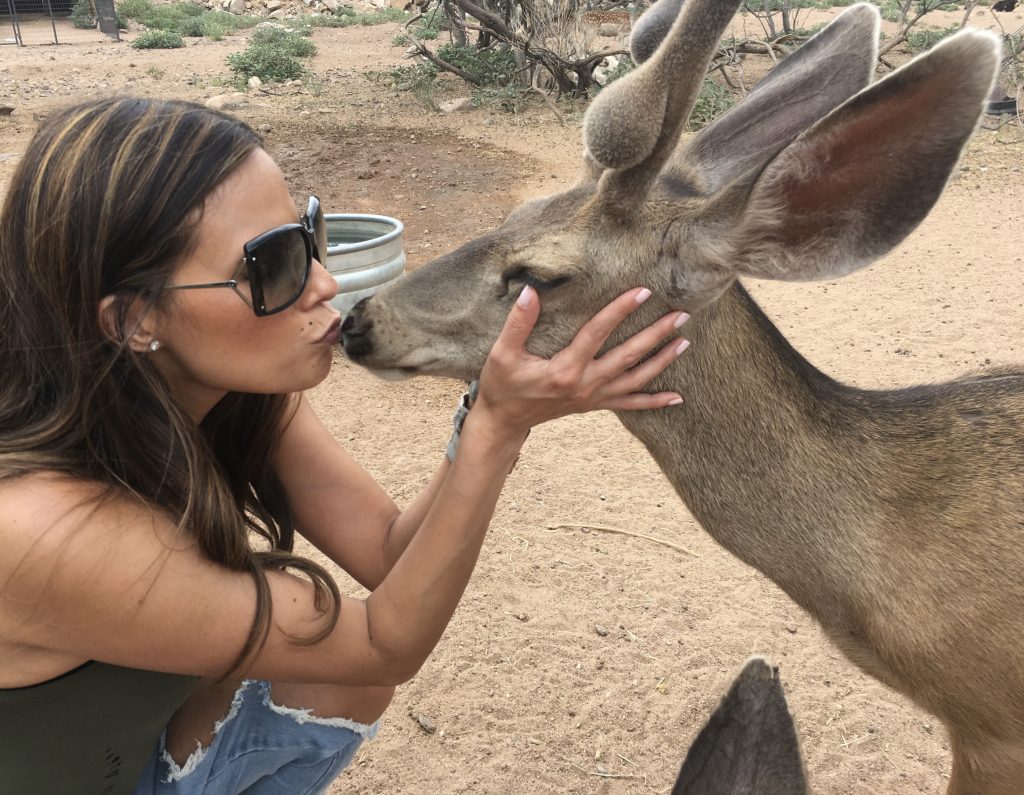
Whether Laflin is advocating for horses, tule elk, or any other number of species, she stressed that “it’s really unfortunate that we always hear so much tragedy with animals, but at the end of the day, they need our voice. They can’t speak, they can’t go to Capitol Hill.”
She concluded by encouraging people to care about the tule elk and other wildlife in the same manner they would care about their cat, dog, or any other pet.
More segments from this EnviroNews feature story series with Bonnie-Jill Laflin can be viewed in the links near the bottom of this page. The transcript to this article’s main video atop this page, reads as follows:
Emerson Urry: I want to talk about that a little bit more in regards to another species. We’ll take a segue here and talk about another politically fraught species, which wild horses of the West certainly are that. But, let’s talk about the tule elk. You’ve recently infused yourself into that battle. First off, tell me about your connection with that animal. It’s at about one percent of his historic numbers, [it’s] endemic to California. What’s your connection there and how far does that go back?
Bonnie-Jill Laflin: Well growing up actually down the road in the Concord-Clayton area, our house [and] property backed right into this area; it was a Naval weapons station called Port Chicago and they had a tule elk reserve right there. So, literally I would go right out to my backyard, and they had a little fence, but still enough where a little kid [could] still put their hand through. So, I would sit there and feed the tule elk…
Urry: Uh-oh!
Laflin: What?
Urry: Feeding the wildlife!? (laughs)
Laflin: I know, right? Tell a kid not to! I was feeding them the good stuff: fruits and stuff. But, I would feed the tule elk and I would just sit there and have my little coloring book and just sit there with them. So, I had this connection with them and I almost kind of thought they were like our pets because they were right there on our property.
Now, going forward to the present day, I started to hear about what was going on with the tule elk and finding out that they were deprived of water and food…
Urry: At Point Reyes?
Laflin: …at Point Reyes national historic park and that they were putting fencing around, so they weren’t able to get to their food. When you first read headlines, [and] I’m not one to just read headlines. I’m like, let me read exactly what’s going on. So, I started reading what was going on. I was infuriated by what was going on. I started talking to my lobbyist and I was like, “what can we do here?” And he started saying the different congressmen that we could talk to, but he didn’t think that they were budging. And that’s when, it was really weird…
Urry: Did you talk to Jared Huffman?
Laflin: Exactly. Yeah.
Urry: Just checking.
Laflin: My lobbyist did, I didn’t. He reached out to a staffer there. It happened to be just like coincidental that IDA reached out to me and it was weird, I was like: God, did they like get into my brain or something? I had maybe tweeted a couple of things of outrage, but I didn’t do too much. They reached out to me and said: Hey, we know that you’re in the Bay Area. We know you’re passionate about animal welfare. Can you get involved? Can you lend your voice — and you, on this topic? Would you come down? Would you see what’s actually going on? Can you help us get the word out and outreach?
Of course, I never say no when it comes to animals, and so I was able to start talking with Jack [Gescheidt] and Natasha [Maria] from IDA and I started to get more and more educated on what was going on.
Urry: You just mentioned the Tomales Point herd — the one that is behind the elk fence at the peninsula — the one that there’s kind of been a dustup over. Just a few days ago, NPS actually released another report. Their report came out in 2020, [and] which I believe they lost almost a third of the herd in 2020.
Laflin: Right.
Urry: Some of these activists that you mentioned actually tried to take them water out there. They were written tickets.
Laflin: Yeah.
Urry: Later on, NPS actually ended up taking water out there, but they just released another report just a few days ago that indicates they’ve lost dozens more animals this year. I would ask you in your view: is NPS [in its] management, are they doing a good job or as some have said, is the agency derelict in its duty as far as management of this Tomales Point herd — the largest remaining herd of tule elk?
Laflin: Well, let’s be honest. It always comes down to money. This is all about money. My thing is when you go to these parks — I don’t care what park you go to across the country, that is the place where you would think animals would be safe. Correct? That’s where wildlife is supposed to be protected and safe. So, that is what outrages me, because if they can’t be safe there, where can animals be safe? The National Park Service, their job is to protect these animals, so now for them to say: Oh, we’re okay with depriving them of water and food; that’s torture. I hope everyone knows that that’s torture what [they] are doing. So, for them to align themselves with the cattle ranchers and be okay with it, it’s disgusting. It’s embarrassing. They should be really ashamed of themselves because I really think it’s put a big black mark on what they do because they have done some great work. I’ve worked with them before with other wildlife, so I’m just a little bit shocked that it’s come to this and they’re okay with it. And to see the images of these [elk]; you can see that some of these tule elk — the way they’ve died — you could tell they were tortured. You see the body and it’s not okay. Again, we’ve got the solutions of what we can do and I don’t understand why they can’t take these cattle somewhere else and be able to either co-exist or get rid of them. It’s really not that hard.
Urry: It’s definitely a unique situation as far as Point Reyes NPS is concerned, and circling back to this report that just came out, what raised my eyebrow is that they actually said that they were going to roll out a new EIS — environmental impact statement — and come up with another management plan for the Tomales Point herd, which is what all this dustup has been over. In your view, what should that plan look like — this new GMP that they’re going to roll out?
Laflin: Well, I also wanted to say, I also failed to mention that there was a time where they wanted to — and you can correct me if I’m wrong — where they actually were thinking about just shooting them to get rid of them.
Urry: In the Drakes Beach herd. Part of the Alternative B was they set a cap on that herd, and so, it’s been said that if that herd actually grows that they’ll shoot them.
Laflin: The best solution is to let the tule elk live how they’ve been living for — I think it’s 10,000 years is what I read — and to have the cattle ranchers find another area. [Those are] my thoughts on it, because the way that the dairy animals are treated, that’s a whole ‘nother story.
Urry: Right.
Laflin: It’s almost like you’re seeing two sides of cruelty if you want me to get down to it.
Urry: Well, and what do you think about all the public comments that came in?
Laflin: What were they?
Urry: I don’t know if you’ve heard much about that, but the (California) Coastal Commission had 45,000 comments that came in and there were a lot of form letters, but there was only 12 comments that supported more ranching in the park.
Laflin: Okay, so it was all on our side?
Urry: [The comments were] overwhelmingly in favor of removing ranching.
Laflin: Well, and that’s why I’m surprised, especially in that area. I mean, I can understand if you’re in other parts of the country, but in that area, you would think that it would be pretty much almost a hundred percent people would support the tule elk. They’re historically a tourist attraction as well. There are a lot of people when they come to the Bay or go to Marin, they want to see the tule elk. There’s certain things that they want to see, so that’s another thing I’m surprised. Yellowstone is not going to get rid of all their bison and [be] like: all right, too bad. I don’t even understand how this all even got to this point.
Urry: It’s an interesting story and it is a very unique story as far as the National Park Service is concerned.
Laflin: Because I didn’t know, I’ll be honest: I didn’t know that there was cattle out there.
Urry: Right. And so on that topic, it is a little bit more of an obscure issue and especially as far as the National Park Service, because when you think Yellowstone, you think of these bison or Bryce National Park, you have these images in your head…
Laflin: … of when you think of that park what animal [it’s associated with] right?
Urry: Right. But as far as Point Reyes, maybe as many people don’t know it or they don’t know what the tule elk is, so I come back to the star-power thing. How do you mobilize star-power on an issue like this that’s this kind of more localized issue and is that something that you’re looking to do — to get more prominent voices involved and would that help and how do you go about that?
Laflin: Well, of course. I’m always trying to get more prominent, big names involved in this, but not just locally, because I think nationally if someone lives somewhere [out of the area that’s okay]. I’ve got a lot of friends, athletes and different celebrities that live across the country, but they don’t like what’s going on and they may not have some roots to that area, but what’s right is right and what’s wrong is wrong, and they want to lend their voice to that, to let people know: this isn’t okay. You can still be outraged. You can still do your part to try to get people aware of what’s going on.
But when I talked to the majority of the Bay Area from media to prominent figures, they don’t even go: tell me more. They go: no, that’s bullshit the tule elk should be there. They don’t even need to know much more.
Urry: Right. But not a lot of people know about this issue.
Laflin: But that’s the other thing, a lot of people don’t. When I do post on my social media, a lot of people go: oh my God, I I’m shocked; I never even knew this was going on; I didn’t know; thank you for educating me and letting me know.
And that’s what I try to do on my social media. I try not to go over the top and turn people off. I try to educate. I do that with everything when it comes to not wearing fur, being cruelty-free (grabs jacket collar laughing) — this is faux fur by the way — everything.
Urry: Copy that (laughing).
Laflin: I just try to educate. It’s more like [when a person says]: I like to wear fur, what’s the problem? Then I show them videos and I show them different things and they’re outraged. Now, if I show you a video and I show you what happens and you’re still like: I don’t care; then you’re just a piece-of-shit human.
But, if you’re not educated in it, I give you the time to understand. [It’s] the same thing [when] people stop eating meat. I’m not going to be that person that’s like: cold turkey you need to stop eating meat. But stop your intake of meat — red meat, beef. Then maybe you stop eating pork. Then maybe you stop eating… You know what I mean? I’m more realistic when it comes to that. I try to help people in a different way. I will never do the attacking, that’s just not me. I won’t sit there and attack and attack because it doesn’t work for me.
Urry: And so speaking of the education in wrapping up today, anything else you’d like to add on either wild horses, the tule elk, or [the topic of] animals at large?
Laflin: I think between the horses and the tule elk, there’s so many other animal welfare issues that always need help. They always need backing financially. They always need help with voices, networking, the outreach. It kind of depends on you. But for me, I’m always trying to align myself with, saving the dolphins, saving the whales, saving the wolves in Idaho.
Urry: Right.
Laflin: There’s so many different animals that need our help and it’s really unfortunate that we always hear so much tragedy with animals, but at the end of the day, they need our voice. They can’t speak, they can’t go to Capitol Hill. They can’t say what’s going on. So, they need us. They need us humans to help. I’m always just trying to get more people involved and I always tell my friends who love their dog and cat: love your dog and cat like you’re going to care about the cow, the pig, the wild horse, the tule elk, the goldfish. You have to care about all animals, not just the ones that happened to be nestled in your home, because that pisses me off.
Urry: Bonnie-Jill Laflin, thanks for taking the time to come out and sit with us on very chilly day here in Northern California.
Laflin: Well, I got warm because I got heated about these issue, so then I’m not as cold!
Urry: You pretty comfortable now?
Laflin: Yeah:
Urry: Well, I appreciate it.
Laflin: Thank you so much.
OTHER STORIES FROM THIS ENVIRONEWS FEATURE STORY SERIES WITH BONNIE-JILL LAFLIN:
NFL/NBA Sports Celeb. Bonnie-Jill Laflin Explains Being an Animal Rights Advocate ‘Right out of the Womb’ – EnviroNews | The Environmental News Specialists
(EnviroNews California) – Round Valley Regional Preserve, Contra Costa County, California – Bonnie-Jill Laflin may be one of the most recognized women in men’s sports, having gained notoriety in both the NBA and NFL.
Leading the Charge for America’s Wild Horses on Capitol Hill: NBA/NFL Celeb. Bonnie-Jill Laflin: ‘[Politics] won’t stop us from fighting’ – EnviroNews | The Environmental News Specialists
(EnviroNews California) – Round Valley Regional Preserve, Contra Costa County, California – Bonnie-Jill Laflin is one of America’s favorite female sports sweethearts. But for more than a decade, she’s been using her popularity and celebrity appeal in a quest to save an American icon: the country’s wild horses.
RELATED NEWS FROM ENVIRONEWS:
NFL/NBA Celeb Bonnie-Jill Laflin Dunks on Cattle Ranchers at Protest to Save Point Reyes Tule Elk – EnviroNews | The Environmental News Specialists
(EnviroNews California) – San Francisco, California – Bonnie-Jill Laflin has six championship sports rings – spanning two men’s sports: five NBA rings and one NFL Super Bowl ring. She earned those as a cheerleader with the San Francisco 49ers in the NFL, and as an executive in the NBA with the LA Lakers.
1 thought on “NBA/NFL Celeb. Bonnie-Jill Laflin: ‘Big Black Mark’: ‘NPS Should be Really Ashamed’ of its Mgmt. of Tule Elk at Point Reyes”
Leave a Reply
You must be logged in to post a comment.
FILM AND ARTICLE CREDITS
- Zoe Zorka - Journalist, Author
- Dakota Otero - Assistant Producer, A Camera Operator, B Camera Operator, C Camera Operator
- Emerson Urry - Journalist, Interviewer, Producer, Video Editor, Colorist, Director of Photography
- Savanna Urry - Production Assistant





d